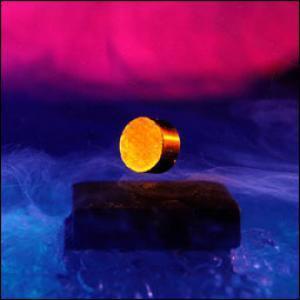
|
| ©DOE/Brookhaven National Laboratory |
| A superconductor, like the one shown above, conducts electricity with no resistance. |
The finding was uncovered during studies of directional dependence in the material's electron-transport and magnetic properties. In the 2D plane, the material acts as a superconductor - conducts electricity with no resistance - at a significantly higher temperature than in the 3D state.
"The results provide many insights into the interplay between the stripe order and superconductivity, which may shed light on the mechanism underlying high-temperature superconductivity," said Brookhaven physicist Qiang Li.
Understanding the mechanism of high-temperature superconductivity is one of the outstanding scientific issues in condensed matter physics, Li said. Understanding this mechanism could lead to new strategies for increasing the superconducting transition temperature of other superconductors to make them more practical for applications such as electrical transmission lines.
"As electricity demand increases, the challenge to the national electricity grid to provide reliable power will soon grow to crisis levels," Li said. "Superconductors offer powerful opportunities for restoring the reliability of the power grid and increasing its capacity and efficiency by providing reactive power reserves against blackouts, and by generating and transmitting electricity."
This research was presented at The March 2008 American Physical Society Meeting in New Orleans, La., March 10 -14.
Adapted from materials provided by DOE/Brookhaven National Laboratory.



Reader Comments
to our Newsletter